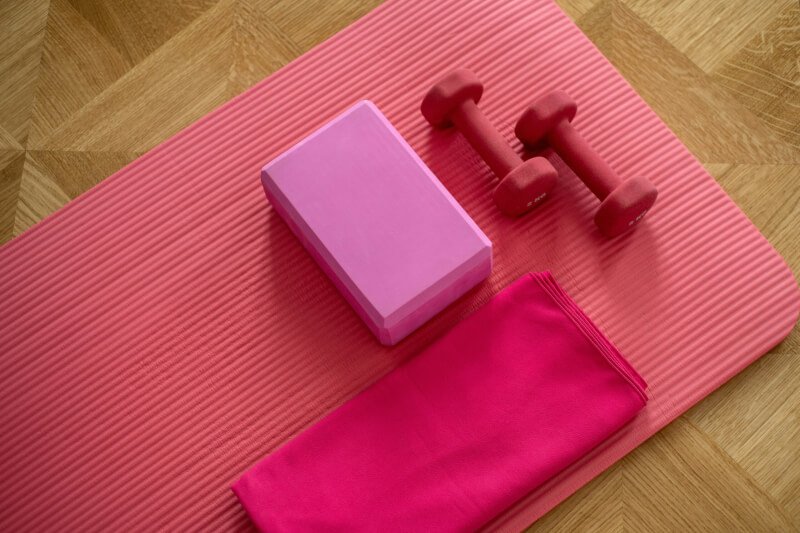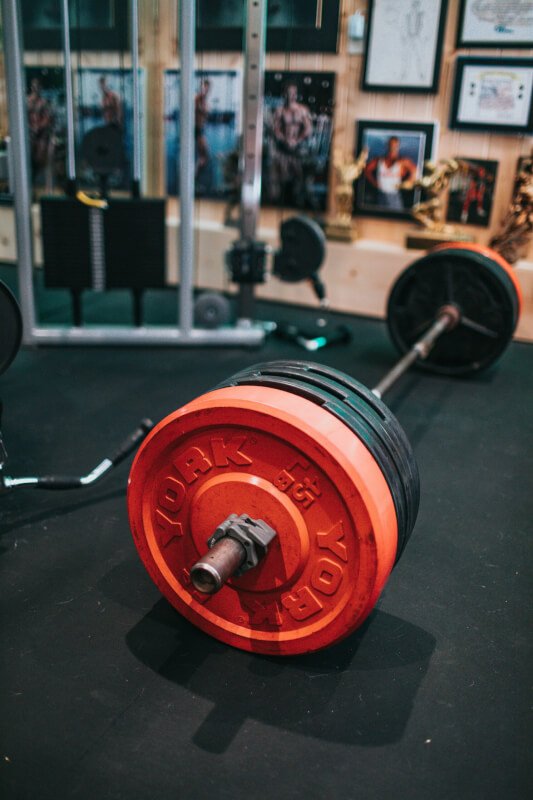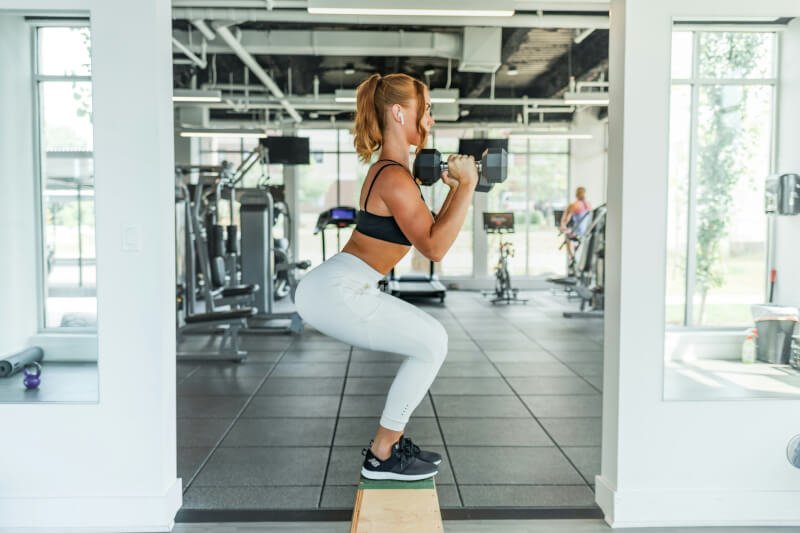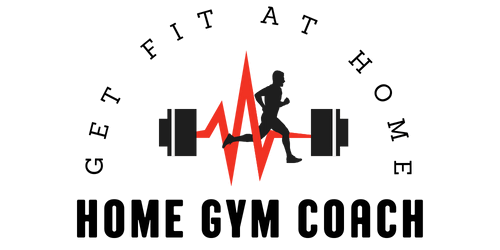If you are a competitive weightlifter looking to take your training to the next level, then you have come to the right place. In this article, we will explore the benefits of custom workout plans specifically designed for competitive weightlifting. These personalized plans take into consideration your individual strengths, weaknesses, and goals, ensuring that you are getting the most out of your training sessions. Whether you are a seasoned competitor or just starting your weightlifting journey, a custom workout plan can help you reach new heights and achieve your desired results. So let’s dive in and discover how these personalized plans can transform your weightlifting game.

Understanding Competitive Weightlifting
What is competitive weightlifting?
Competitive weightlifting is a sport that involves lifting heavy weights in two specific movements: the snatch and the clean and jerk. These movements require not only pure strength, but also technique, precision, and mental focus. Competitive weightlifting is governed by international organizations such as the International Weightlifting Federation (IWF) and is divided into various weight categories. Athletes compete against others in their weight class to lift the highest total weight possible.
Importance of custom workout plans
Custom workout plans play a crucial role in the success of competitive weightlifters. Unlike generic workout programs, a customized plan takes into account an individual’s unique needs, goals, and physical capabilities. It ensures that every aspect of training, from exercise selection to training frequency and progression, is tailored specifically for the athlete. This personalized approach optimizes performance, minimizes the risk of injuries, and enhances overall results.
Benefits of having a tailored workout plan
Having a tailored workout plan offers several benefits for competitive weightlifters. Firstly, it maximizes efficiency by focusing on exercises that directly contribute to improving performance in the snatch and clean and jerk. Rather than wasting time on exercises that may not be as effective, a custom plan hones in on the specific movements and muscle groups required for weightlifting success.
Secondly, a personalized workout plan allows for targeted progress tracking and monitoring. By setting specific and measurable goals, athletes can track their progress more accurately and make necessary adjustments to their training routine. This helps to ensure consistent improvement and prevent plateauing.
Finally, a customized plan takes into account an individual’s strengths, weaknesses, and injury history. By addressing weak points and incorporating exercises that target specific muscle groups, athletes can reduce the risk of muscle imbalances and prevent injuries. Overall, a tailored workout plan helps athletes reach their full potential while minimizing the chances of setbacks.
Assessing Individual Needs
Determining weightlifting goals
Before designing a custom workout plan, it is crucial to assess an athlete’s weightlifting goals. This includes identifying specific performance targets, such as increasing maximum snatch or clean and jerk weight, as well as setting time-based goals, such as qualifying for a competition or achieving a personal record. By clarifying these goals, both short-term and long-term, the workout plan can be structured to prioritize and optimize progress towards these objectives.
Analyzing body composition
Body composition analysis is an important step in assessing individual needs for weightlifting. It helps determine the athlete’s body fat percentage, lean muscle mass, and overall physique. This information is valuable for understanding how an individual’s body type may affect their performance and for tailoring the workout plan accordingly. For example, individuals with higher body fat may need to focus on fat loss and improving body composition, while those with low body fat may focus more on muscle gain and strength development.
Assessing current fitness level
Assessing an athlete’s current fitness level provides valuable insights into their baseline strength, mobility, and endurance. This assessment can involve various tests and measurements, such as determining maximum lift weights, evaluating flexibility and range of motion, and assessing cardiovascular fitness. Understanding an athlete’s starting point allows for the creation of a workout plan that is appropriately challenging yet achievable, setting the stage for gradual progress and improvement.

Designing a Custom Workout Plan
Setting specific and measurable goals
A custom workout plan utilizes specific and measurable goals to guide training and track progress. These goals should be tailored to the individual’s desired weightlifting outcomes and realistic within the given timeframe. For example, an athlete may set a goal to increase their maximum snatch weight by 5 kilograms within three months. By setting concrete targets, athletes have a clear direction and motivation for their training.
Selecting the right exercises
Exercise selection is a critical component of a custom workout plan. The plan should prioritize exercises that directly contribute to improving performance in the snatch and clean and jerk. This typically includes variations of these two lifts themselves, along with accessory exercises that target specific muscle groups involved in weightlifting movements. The exercises chosen should be based on the athlete’s needs, abilities, and areas for improvement, allowing them to focus on the most crucial aspects of their training.
Determining training frequency
The frequency of weightlifting training sessions is an important consideration when designing a custom workout plan. This can vary depending on an athlete’s experience level, recovery capabilities, and training goals. Generally, beginners may start with two to three weightlifting sessions per week, while more advanced athletes may train four to six times per week. The goal is to find a balance between training volume and recovery to ensure optimal progress without overtraining.
Choosing appropriate training splits
Training splits refer to how workouts are organized throughout the week. Custom plans should carefully consider the distribution of exercises and muscle groups to avoid overloading or neglecting specific areas. Common training splits for weightlifting include full-body workouts, upper-lower splits, and specific muscle group splits. The choice of training split should be based on an athlete’s goals, recovery capacity, and personal preferences.
Considering periodization techniques
Periodization is a training approach that involves dividing the training plan into distinct phases or cycles, each with a specific focus and intensity level. This technique allows for systematic progression, recovery, and adaptation, optimizing long-term performance gains. Custom workout plans may incorporate periodization techniques, such as linear periodization or block periodization, based on an athlete’s goals and timeline. Periodization helps to prevent plateaus, maintain motivation, and ensure consistent progress throughout the training process.
Creating a Progression Plan
Gradually increasing weight and intensity
A progression plan outlines how an athlete will gradually increase the weight and intensity of their weightlifting training over time. This progression is crucial for continually challenging the body and promoting adaptation. It involves gradually increasing the weight lifted, the number of repetitions performed, or the intensity of the exercises. The progression plan should be structured to avoid sudden jumps in intensity, allowing the body to adapt and minimize the risk of injuries.
Implementing progressive overload
Progressive overload is the principle of gradually increasing the demands placed on the body during training. It is a key factor in promoting muscle and strength gains. Custom workout plans should implement progressive overload by progressively increasing the workload through adjustments in weight, volume, or intensity. This gradual progression stimulates the body to adapt and become stronger, leading to consistent improvements in weightlifting performance.
Tracking and monitoring progress
Tracking and monitoring progress is essential to gauge the effectiveness of a workout plan and make necessary adjustments. Athletes should record their lift weights, repetitions, and other relevant metrics to track their progress over time. This provides valuable information on how an athlete is responding to the training plan and whether adjustments need to be made to continue progressing. Regular progress tracking helps maintain motivation, identify areas for improvement, and celebrate achievements along the way.
Modifying the plan as needed
A custom workout plan is not set in stone but should be adaptable to an athlete’s changing needs. As an athlete progresses, their training requirements may evolve, and modifications to the plan may be necessary. This can include adjusting weights, changing exercises, or altering the training split. It is important to regularly evaluate the effectiveness of the plan and make adjustments accordingly to ensure continued progress and prevent plateaus.

Incorporating Essential Exercises
Squat variations
Squat variations are fundamental exercises for weightlifters as they target the lower body muscles, including the quadriceps, hamstrings, and glutes. Front squats and back squats are commonly included in custom workout plans, as they mimic the movements involved in the snatch and clean and jerk. These variations help improve lower body strength, quadriceps dominance, and stability, all of which are crucial for successful weightlifting performance.
Deadlift variations
Deadlift variations are essential for developing posterior chain strength and power, which play a vital role in weightlifting movements. Conventional deadlifts, sumo deadlifts, and Romanian deadlifts are examples of deadlift variations commonly incorporated in customized workout plans. These variations strengthen the hamstrings, glutes, and lower back, improving overall pulling power and stability.
Bench press variations
Bench press variations, although not directly involved in weightlifting movements, are often included in custom workout plans to develop upper body pressing strength. Bench press variations, such as flat bench press, incline bench press, and close grip bench press, target the chest, shoulders, and triceps. A strong upper body provides stability and power during weightlifting movements, enhancing overall performance.
Overhead press variations
Overhead press variations are crucial for developing upper body strength and stability, particularly in the shoulders and triceps. These variations mimic the overhead movement patterns required in weightlifting. Seated or standing military presses, push presses, and jerk variations are often incorporated into custom workout plans. Overhead presses help improve the strength, stability, and control necessary for successful weightlifting performance.
Accessory exercises for specific muscle groups
Custom workout plans should include accessory exercises that target specific muscle groups involved in weightlifting movements. These exercises strengthen the muscles that support primary lifting techniques, aiding in overall performance and injury prevention. Examples of accessory exercises include pull-ups, rows, lunges, core exercises, and exercises for grip strength. Including these exercises in the plan ensures a balanced and comprehensive approach to strength development.
Balancing Strength and Technique Training
Developing strength through compound exercises
Developing strength is a vital component of competitive weightlifting. Custom workout plans prioritize compound exercises that utilize multiple muscle groups simultaneously, such as the snatch and clean and jerk. These exercises build overall strength and power, allowing athletes to lift heavier weights over time. It is important to focus on proper form and technique when performing compound lifts to ensure optimal results and reduce the risk of injury.
Focusing on technique and form
Technique and form are paramount in weightlifting, as they maximize efficiency and prevent injuries. Custom workout plans should allocate ample time for mastering and refining the technical aspects of the snatch and clean and jerk. This may involve working with a coach or experienced weightlifter to ensure correct execution, understanding proper body positions, and implementing effective barbell control. Prioritizing technique training allows athletes to lift heavier weights with greater precision and reduce the risk of muscle imbalances or compensations.
Implementing skill-specific drills
In addition to the snatch and clean and jerk, skill-specific drills are important for honing technique and building muscle memory. These drills isolate specific phases or movements of the lifts and help athletes improve their timing, speed, and coordination. Examples of skill-specific drills include snatch balances, muscle snatches, jerk drives, and drop snatches. Including these drills in custom workout plans allows athletes to focus on specific elements of the lifts and address any technical weaknesses or inefficiencies.
Including mobility and flexibility exercises
Flexibility and mobility are essential for weightlifting to achieve optimal positions for the snatch and clean and jerk. Custom workout plans often incorporate mobility exercises that target areas prone to restrictions or tightness, such as the hips, ankles, and shoulders. These exercises help increase range of motion, correct imbalances, and improve overall movement quality. Stretching exercises, foam rolling, and dynamic warm-ups can also be included to enhance flexibility and prepare the body for lifting.

Addressing Weak Points
Identifying weak muscle groups
Identifying weak muscle groups is crucial in addressing areas that may be limiting weightlifting performance. A comprehensive evaluation of an athlete’s strength and movement patterns can reveal muscle groups that are underdeveloped or imbalanced. Common weak areas in weightlifting include the posterior chain (hamstrings, glutes, lower back), core muscles, shoulder stabilizers, and grip strength. By identifying these weaknesses, a custom workout plan can incorporate exercises that target these muscle groups specifically, allowing for balanced strength development.
Targeting weak points through specialized exercises
Custom workout plans should include specialized exercises that target weak points identified during the assessment phase. For example, if an athlete lacks lower back strength, exercises such as good mornings or back extensions can be incorporated to strengthen the posterior chain. Similarly, if shoulder stability is a weak point, exercises like rotator cuff exercises or shoulder external rotations can be included. By targeting weak points with specialized exercises, athletes can improve strength in specific areas and reduce the risk of injuries due to muscular imbalances.
Incorporating assistance exercises
Assistance exercises are supplemental exercises that support and enhance the main lifts in weightlifting. These exercises target specific muscle groups or movement patterns that are essential for successful weightlifting but may not be directly trained by the snatch and clean and jerk. Examples of assistance exercises include pull-ups, Romanian deadlifts, glute bridges, and core exercises. Including assistance exercises in the custom workout plan helps ensure well-rounded strength development and enhances overall weightlifting performance.
Utilizing corrective exercises
Corrective exercises are aimed at improving movement patterns, correcting imbalances, and addressing postural issues that may hinder weightlifting performance. These exercises focus on improving mobility, stability, and alignment of specific joints or muscle groups. Common corrective exercises include hip openers, scapular stabilization exercises, and glute activation exercises. Incorporating corrective exercises in the custom workout plan promotes optimal movement patterns, reduces the risk of injuries, and enhances overall lifting technique.
Considering Recovery and Rest Days
Understanding the importance of rest
Rest is a critical element of any training program, including competitive weightlifting. Adequate rest allows the body to recover, repair muscle tissue, replenish energy stores, and adapt to the stress of training. Ignoring the importance of rest can lead to overtraining, decreased performance, increased risk of injuries, and burnout. Custom workout plans should allocate rest days strategically throughout the week to ensure sufficient recovery and promote long-term progress.
Scheduling proper recovery days
Custom workout plans should include scheduled recovery days to allow for optimal rest. These days are dedicated to active recovery or complete rest, depending on the athlete’s preference and recovery needs. Active recovery activities, such as light cardio, stretching, or mobility work, can help promote blood flow, reduce muscle soreness, and enhance overall recovery. The frequency and intensity of recovery days can vary depending on an athlete’s training volume, ability to recover, and personal preferences.
Incorporating active recovery techniques
Active recovery techniques can be beneficial for promoting recovery while maintaining an active lifestyle. Custom workout plans may include activities such as swimming, yoga, or light cycling on recovery days. These low-intensity activities help improve blood flow, enhance mobility, and reduce muscle soreness without placing excessive stress on the body. Active recovery techniques aid in the removal of metabolic waste, facilitate tissue repair, and promote an optimal recovery state.
Utilizing foam rolling and stretching
Foam rolling and stretching are valuable recovery tools that can be incorporated into custom workout plans. Foam rolling, also known as self-myofascial release, involves using a foam roller to apply pressure to specific muscles to relieve tension and trigger points. Stretching exercises, both static and dynamic, help improve flexibility, increase range of motion, and reduce muscle soreness. Including foam rolling and stretching exercises in a custom workout plan aids in muscle recovery, promotes better movement quality, and reduces the risk of injuries.

Nutrition and Supplementation
Importance of proper nutrition for weightlifting
Proper nutrition plays a vital role in supporting weightlifting performance and maximizing progress. A custom workout plan should include guidelines for optimal nutrition, focusing on macronutrient balance and adequate caloric intake. Carbohydrates provide energy for training, proteins support muscle repair and growth, and fats contribute to hormonal balance. Adequate hydration is also critical for optimal performance. Additionally, weightlifters should prioritize consuming nutrient-dense foods to support overall health and recovery.
Creating a well-balanced diet
A well-balanced diet for weightlifters should include a variety of nutrient-dense foods from all major food groups. Custom workout plans may recommend consuming lean proteins, such as chicken, fish, and tofu, to support muscle repair and growth. Complex carbohydrates, like whole grains, fruits, and vegetables, provide sustained energy for training sessions. Healthy fats from sources like avocados, nuts, and olive oil are essential for hormone production and joint health. Customizing a well-balanced diet ensures athletes have the necessary nutrients to fuel their training and optimize recovery.
Addressing macronutrient and micronutrient needs
Weightlifters have specific macronutrient and micronutrient needs to support their training demands. Custom workout plans should address these needs by providing guidelines on appropriate intake levels. Macronutrients, such as carbohydrates, proteins, and fats, should be balanced to ensure energy availability and muscle recovery. Micronutrients, including vitamins and minerals, play essential roles in overall health and function. Customized plans may recommend blood tests or consulting with a nutritionist to ensure specific micronutrient needs are addressed through diet or supplements.
Supplementation for enhanced performance
Supplements can complement a well-rounded nutrition plan and offer additional benefits for weightlifters. Custom workout plans may include recommendations for supplements that can support performance, recovery, and overall health. Common supplements used in weightlifting include protein powders, creatine, branched-chain amino acids (BCAAs), and omega-3 fatty acids. It is important to note that supplements should not be seen as a substitute for a well-balanced diet but rather as tools to enhance specific aspects of training and nutrition.
Monitoring and Adjusting the Plan
Regularly tracking progress and performance
Tracking progress and performance is essential for assessing the effectiveness of a custom workout plan and making informed adjustments. Athletes should monitor metrics such as maximum lift weights, repetitions, rest times, and recovery rates to evaluate their progress over time. Regular performance tracking provides valuable insights into an athlete’s strengths, weaknesses, and areas for improvement, allowing for targeted adjustments to the training plan.
Analyzing the effectiveness of the plan
Analyzing the effectiveness of a custom workout plan involves assessing whether the desired goals are being achieved and if progress is being made. This can be done through regularly reviewing training logs and progress tracking data. By comparing an athlete’s current performance to their initial baseline, it becomes evident whether the plan is leading to the desired outcomes. Analyzing the effectiveness of the plan helps identify any areas that need adjustments or modifications to optimize progress.
Modifying the plan based on individual requirements
Custom workout plans are not static and should be adjusted based on an individual’s changing needs and progress. As an athlete’s strength, technique, and overall fitness improve, the plan should evolve to continue challenging and stimulating progress. Customization may involve adjusting exercises, increasing weights, altering training splits, or addressing specific weaknesses. By modifying the plan to meet individual requirements, athletes can continue to push their limits, prevent plateaus, and achieve long-term success.
Seeking professional guidance when needed
Creating and modifying a custom workout plan can be complex, especially for competitive weightlifters seeking optimal results. Therefore, it is important to seek professional guidance when needed. Coaches, trainers, and sports professionals with expertise in weightlifting can provide valuable insight, experience, and specialized knowledge to help craft an effective and customized workout plan. They can assess an athlete’s needs, provide expert advice on exercise selection and programming, and monitor progress closely to ensure the plan is aligned with individual goals and requirements. Seeking professional guidance ensures that athletes have the best possible support on their journey to competitive weightlifting success.
In conclusion, understanding competitive weightlifting requires a comprehensive approach that includes assessing individual needs, designing a custom workout plan, creating a progression plan, incorporating essential exercises, balancing strength and technique training, addressing weak points, considering recovery and rest days, focusing on nutrition and supplementation, and regularly monitoring and adjusting the plan. By considering these factors and tailoring the plan to an individual’s specific goals and requirements, competitive weightlifters can maximize their performance, prevent injuries, and achieve their full potential in this challenging and rewarding sport.


